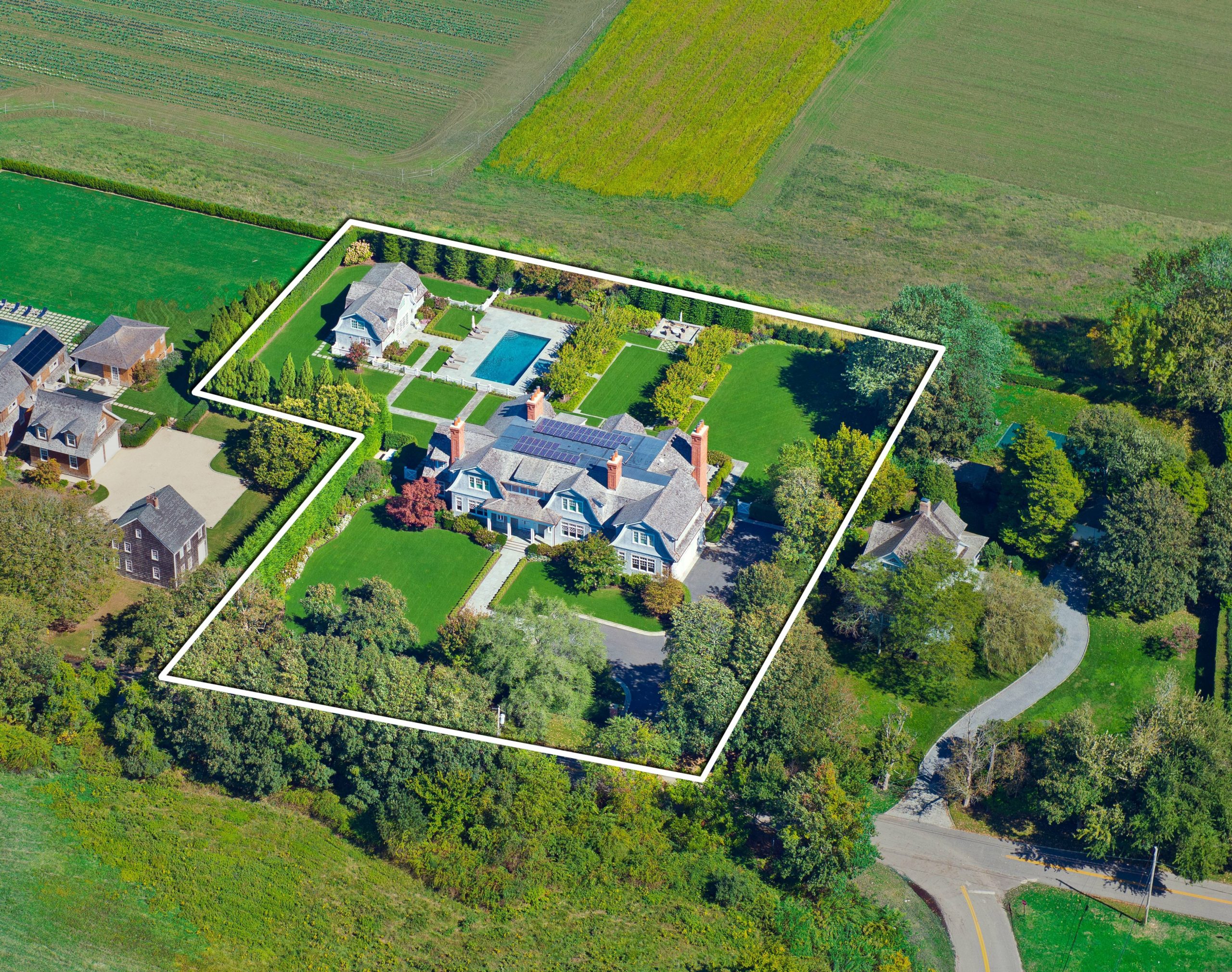
The power of threes can be seen in good luck and bad, sheets to the wind, baseball strikes, laws of motion, musketeers, wise men and even $14 million deals.
In the final weeks of last year’s fourth quarter, three notable estates landed at this price point, the first an 8,600-square-foot traditional on 1.5 acres at 179 Davids Lane in Water Mill that sold for $14.5 million — and $2.6 million over asking, at that.
Overlooking 34 acres of reserve, the seven-bedroom, nine-bath opens with a double-height foyer that leads to formal living and dining rooms, a den, library, wine room, and eat-in chef’s kitchen, attached to a screened sunroom. The second floor, accessed by either staircase or elevator, includes a master suite and four guest rooms.
The 4,000-square-foot lower level offers a billiards room, home theater, gym, golf simulator and two additional bedrooms, with seven fireplaces spread throughout the home. Outside, a heated Gunite pool and guest house, with its own 800-square-foot lower level, round out the property.
“This residence is thoughtfully constructed and beautifully appointed in exceptional taste,” the listing said. “The multiple terraces are ideal for entertaining.”
Last listed at $11.9 million, the co-exclusive with Sotheby’s International Realty and Douglas Elliman traded hands between LLCs on November 12, according to the Real Estate Report Inc., with Angela Chmielewski from Corcoran’s East Hampton office bringing the buyer.
Four days later and a town over, the 10,000-square-foot, 138-year-old home at 72 Apaquogue Road in East Hampton sold for a cool $14 million on November 16, listed with Frank Newbold and Marilyn Clark of Sotheby’s International Realty.
On the market for the first time in a century, the symbol of East Hampton’s legendary summer colony was built in 1884, but is not protected as historic, the listing said. Its new, unnamed owner could tear it down and build a new home to his or her heart’s desire — well, up to 10,549 square feet — with room for pool and tennis on the 4-acre lot.
But let’s hope they don’t. The four-story home has a rich history as East Hampton’s first boarding house — known as “The Apaquogue” — with 16 bedrooms, seven baths, three fireplaces, high ceilings, original period details and a large wrap-around porch to catch the ocean breeze.
Down the road, the former East Hampton estate of longtime summer resident George Gowen, who died last year at age 91, sold for $14 million on October 29, trading hands between his estate and an LLC, according to the Real Estate Report Inc. Compass represented the listing.
Gowen, an attorney who once served as chairman of the American Society for the Prevention of Cruelty to Animals, considered his home at 53 Lily Pond Lane his paradise, his obituary said, and the nonagenarian practiced ocean swimming through his 90th year.
Granted deeded beach access through a private walkway off Drew Lane, the eight-bedroom, four-bath home is situated on just shy of an acre, built in 1913 as the second of four houses by Dr. Frederick K. Hollister in the East Hampton estate section — “all of them architecturally significant, and his second might be his best,” according to the listing.
Billed as “a step back in time,” the 6,200-square-foot shingle-style cottage is notable for its understatement, despite its 110-foot width. Architect John Custis Lawrence designed the home as a “simple flat farmhouse façade bookended with a saltbox cape on the left and a colonial house on the right,” the listing said.